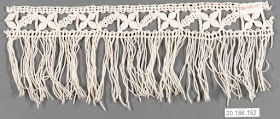The summer blouse "Astrid", sold by "Astréamagasinet", who claim to be Stockholm's oldest shop specializing in blouses)
Advert for Florodol soap, who advertised in every issue of "Vecko-Jorunalen". This one claims that you increase your marksmanship (in the game of love) by using the soap.
"New corsets", ad for A. Jönsson & co, from Göteborg.
Cheap ladies' lingerie advertised by Nordiska Kompaniet, the first Swedish departement store, in Stockholm.
"All kinds of clothes, for gents, ladies and children" . Advertising for "Syfabriken i Älfsered".
Viking shoe polish for textile shoes. The brand still exists.
Two ads from the Gothenburg departement store Vollmers-Meeths (later just Meeths). Taffeta skirts and white blouses; and their corset "Tango". Of course tango was all the rage at the time.
And finally four adverts from the Gothenburg based sewing factory Wettergrens, who were known for staying very true to the Paris trends.




































